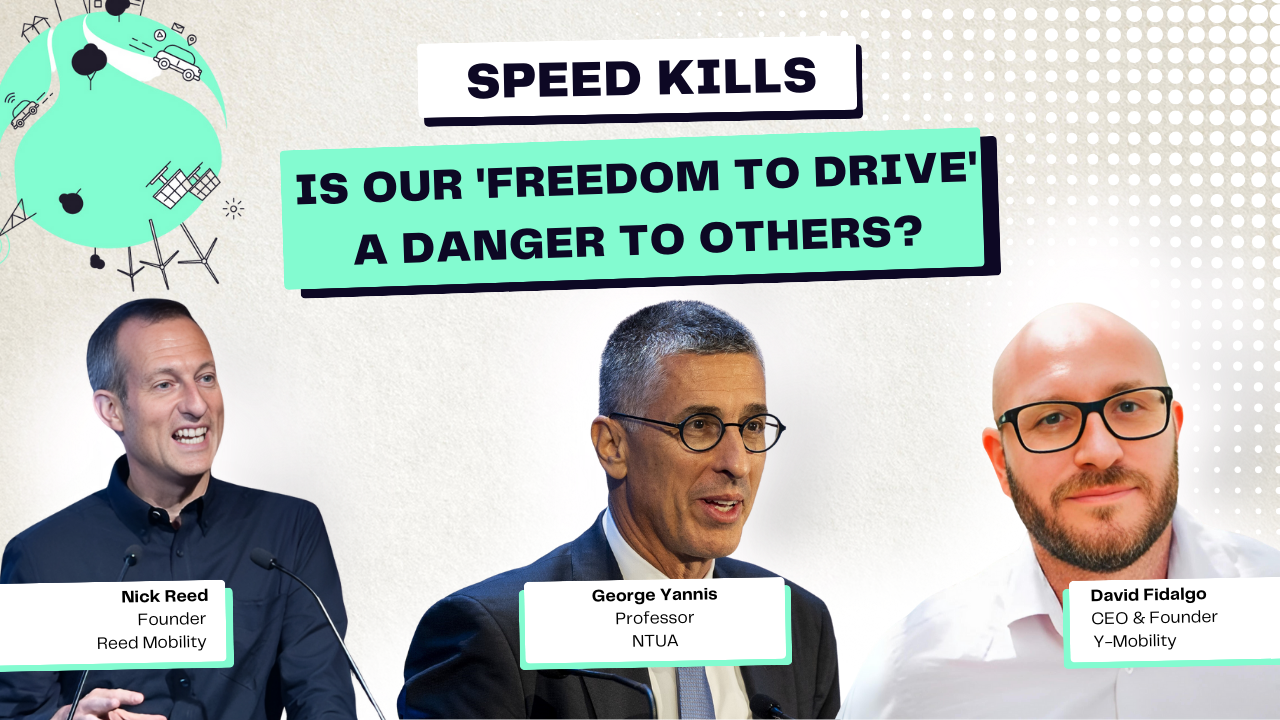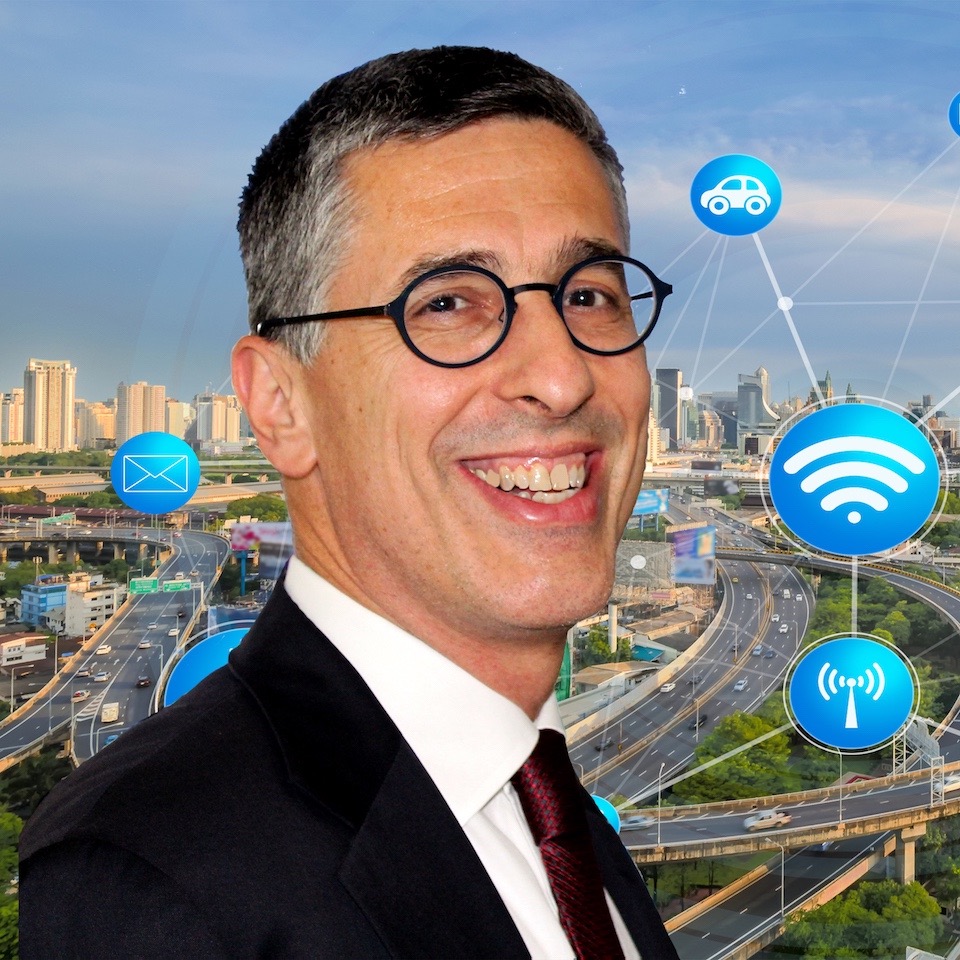How did you get involved in the transport space? Why in this place? Why are you so passionate about this?
Things happened like this: I was studying Civil Engineering at NTUA and my Diploma Thesis was on road safety. And then I continued and never stopped. It kept expanding, covering more and more areas, because road safety involves human factors, infrastructure and vehicles. Τhere was a great need, both in Europe and Greece for improvements in mobility and safety. So, we cannot really separate traffic, engineering, transport planning, mobility plans and, of course, road safety. Ιt was enlarging and recently we have been many new technologies: Intelligent Transportation Systems, automation, etc. It is passionate to have always new challenges in front; some of them are highly technological, some others are simply managerial.
It is very rewarding and fulfilling the feeling that we are saving lives at the end of the day. Sometimes it is at a macro level, supporting governments to make impactful decisions. Other times, we simply install speed bumps and save lives directly. And this is a great compensation to our efforts. It is not always easy to convince the society or governments. But road safety is a very challenging profession and we keep digging deeper and deeper, and going wider and wider. Recently, we have gone beyond Europe, where many lives have already been saved, and we now contribute globally. A lot of lives are being saved thanks to our scientific evidence. So, we do not stop working for road safety, because it is just that rewarding.
How did you approach the analysis of the 30 km/h speed limit in the context of Europe-wide traffic speed restrictions?
We know from scientific evidence that the major factor of risk is speed and speeding. However, sometimes we can implement measures more easily through standards, very successfully, as they did in the UK or in Sweden, where streets are narrower simply by design standards. On narrow streets, you cannot speed, and this is a passive measure coming from the Authorities.
Concerning behaviour, we need enforcement, education, campaigns and training. This is more difficult, especially when we want to pass laws about speed limits or about how high the fines will be, we need discussion and effort, because there are many factors involved. The same applies also to vehicles. The European Union has implemented, since last July, a mandatory warning system for exceeding speed limits in every new car.
But there is one single measure that seems to be a catalyzer today. We had been waiting for this for years, because we kept saying that if you want to decrease crashes and fatalities, you have to focus on enforcement. However, enforcement cannot be continuous and it is not easily accepted. Today, we have a great example of the implementation of citywide 30 km/h speed limits as a measure, a catalyzer bringing quick results with very little change in our habits. Indeed, during congestion and rush hours, we don’t really change our behaviour. Perhaps motorcyclists during rush time can go over 30 km/h. However, the time period when most crashes occur is in the evening. And if we have speed limits enforced mainly through cameras in the evening, we can save many lives. So, we see that this is not a big change in our habits, and the figures show that there is, on average, a 37% reduction in fatalities in several European cities.
This is tremendous, and there has never been such a significant decrease from a single measure in road safety so far. That’s why we say this is a catalyzer, it faces strong reactions because there is a lot of advertising about speeding, cars, or habits, and this represents an entire culture that we need to change. In fact, the first cultural aspect we have to change is the culture of the Authorities. We struggle to convince decision-makers, those in charge at the local, regional, and national levels, to change their mindset. And once that happens, everything else will follow.
Society interacts with Authorities, and Authorities interact with society. We have to work with both and it is a continuous challenge, in which sometimes we make progress, and then we are stopped. We see this in the case of Spain or across Wales, where, especially in the latter, they implemented speed limits in all urban areas. Then, the British government intervened, saying that we need to consider horizontal rules. It’s an ongoing process. The same is happening in Italy, with Bologna. However, the figures fortunately demonstrated a great leap and significant improvement. So, I’m optimistic that we have a lot of work ahead to convince and change the culture, but we are not going backwards. There is no city that has decided to return to higher speed limits.
How can such speed limits be adapted in our everyday life?
There is a fundamental difference between traffic of private cars and any other traffic, on the road, air, sea or rail, between private and professional drivers. In particular, on the road, we can regulate taxis and trucks, who are professional drivers, but not the 90% who are private drivers. For professionals, driving is their everyday job and it is totally different to set standards for them compared to private car users. This is the real challenge that private cars and drivers need to change their culture. We are working with the rules; we have the speed limiters installed, so far alerting, but one day they might be obligatory.
We have to pursue cultural change step by step, and this is what is currently happening with speed limits on urban roads and vehicles. However, a fundamental aspect that is gaining more and more ground is that people who are in the cities are not just drivers, they are also pedestrian and cyclists. So, when we talk about lower speeds, we have to put themselves in the place of the vulnerable road user (pedestrian or cyclist). Indeed, driving at 50 km/h in the city may be safe in the car and serious crashes might be very difficult to happen. But if we hit a pedestrian, cyclist, or even a motorcyclist, the severity will be very high. At 50 km/h, the fatality probability for a pedestrian is 90%.
If we put the people at the place of the pedestrian instead of the driver, then they change their driver behaviour. This is the fundamental challenge that when we talk about speed, we are not talking about the safety of cars; we are talking about the safety of pedestrians, cyclists, and motorcyclists. And this cultural shift is already happening. When it does, we see more pedestrians, more elderly people and children in the streets, more cyclists and a significant increase in Public Transport passengers. Because there is an overall shift from private cars to Public Transport, meaning that public transport may be the most important safety measure, as it is the safest mode of transport. The more people use public transport, the fewer private cars are on the road, traffic slows down and everything becomes safer, and even cyclists, who are typically exposed.
With low speeds of the overall traffic, including their own traffic and of motorcyclists, we have much less injuries and fatalities and a much safer environment for all. This is the message that we pass that we are not talking too much about the safety of cars, because the vehicle industry has already achieved very high standards of active and passive safety, but it is the people outside the car that we want to protect, who account for 70% of fatalities in European cities. This is the way that we go for the cultural shift and the fundamental change to start with is the Authorities through new standards and new regulations. We need them to believe in this change and save lives; just as we do, as Scientists.
It is very difficult to cross roads with many lanes in the city center, neighborhoods feel very calm and then certain neighborhoods across is really heavy dense roads, what’s your response to that?
There is also a clear issue of sharing public space between the different modes of transport, and there is a fundamental principle in road safety that we call “safety in numbers.” This means not only what we see from figures and data, but also what we observe on the road. When there are many cyclists, car drivers behave better. On the other hand, when there are very few, cars tend to be more aggressive. The same also applies to pedestrians. So, the slower the traffic is, the more cyclists and pedestrians are on the road, and the more people respect each other. Similarly, the more pedestrians we see on the road, the better the behaviour of cyclists, motorcyclists and car drivers is.
It is critical to reach this level of balance. In the early stages, we may not see many pedestrians or cyclists because we have narrow sidewalks and most of the space is given to cars. The more space we give to cyclists and pedestrians, the better drivers behave. Behaviour is related to the infrastructure and to how we share public space. It is the Authorities who should take the initiative. People can express different demands, some want more space for shops, others for walking or for residential areas, but it is the Authorities who need to promote a culture of safety, designing public space in a way that fits everybody to move comfortably and safely.
What is the key to congestion, road safety and traffic problems?
Today, everybody complains about congestion. But safety is part of the whole mobility system, so we have to explain mobility as a whole. Speeding is bad for safety, and using Public Transport or active travel, such as walking or cycling, is the solution. We need to explain that life can be better if it is balanced between transport modes and speed. Switching to walking, cycling and Public Transport is the key. In Europe, especially in Western and Northern Europe, this balance is becoming more and more established. But Southern or Eastern Europe, and many other countries around the world are still lagging behind, so we need these bright examples from some European countries to be applied everywhere.
When it comes to Authorities, the culture is not about the people, it is about the place. We see Northern Europeans coming to Greece and not wearing helmets and we see Greeks going to Western Europe and behaving very well. So, it is a matter of the Authorities and the overall system (including roads, vehicles and people) working together to make this cultural change. It is a strong responsibility of scientists and Authorities to lead this cultural change toward slower and safer speeds.
Interview at the Podcast Y-Mobility on February 2025

